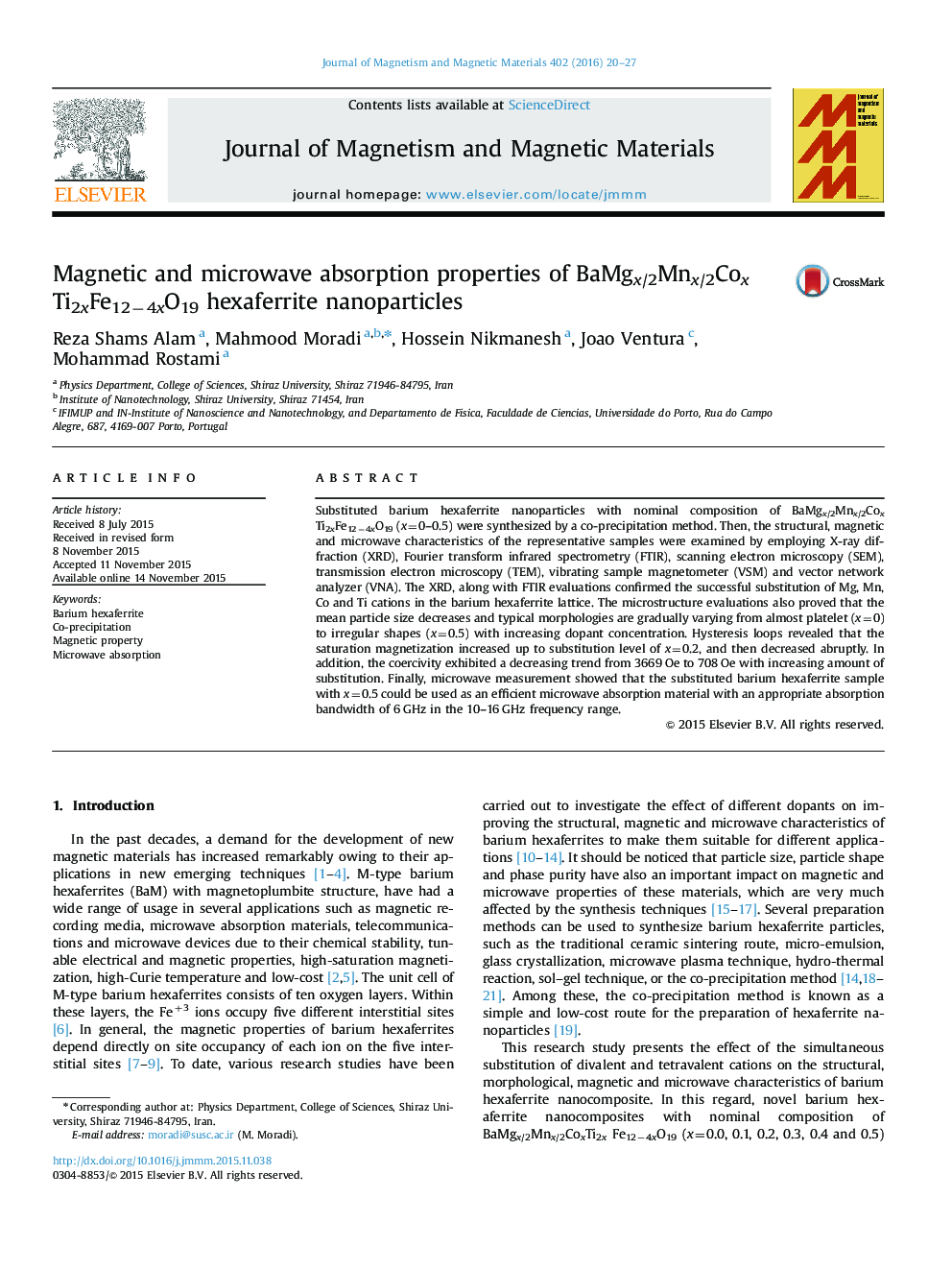| Article ID | Journal | Published Year | Pages | File Type |
|---|---|---|---|---|
| 1798336 | Journal of Magnetism and Magnetic Materials | 2016 | 8 Pages |
•BaMgx/2Mnx/2CoxTi2xFe12−4xO19 were synthesized by a co-precipitation method.•The structural, magnetic and microwave absorption properties were investigated.•Maximum reflection loss of −16.4 dB with a bandwidth of about 6 GHz can be achieved.•The mean nanoparticles size decreases by increasing substitution (x).•The coercivity decreases from 3669 (x=0 sample) to 708 (x=0.5).
Substituted barium hexaferrite nanoparticles with nominal composition of BaMgx/2Mnx/2CoxTi2xFe12−4xO19 (x=0–0.5) were synthesized by a co-precipitation method. Then, the structural, magnetic and microwave characteristics of the representative samples were examined by employing X-ray diffraction (XRD), Fourier transform infrared spectrometry (FTIR), scanning electron microscopy (SEM), transmission electron microscopy (TEM), vibrating sample magnetometer (VSM) and vector network analyzer (VNA). The XRD, along with FTIR evaluations confirmed the successful substitution of Mg, Mn, Co and Ti cations in the barium hexaferrite lattice. The microstructure evaluations also proved that the mean particle size decreases and typical morphologies are gradually varying from almost platelet (x=0) to irregular shapes (x=0.5) with increasing dopant concentration. Hysteresis loops revealed that the saturation magnetization increased up to substitution level of x=0.2, and then decreased abruptly. In addition, the coercivity exhibited a decreasing trend from 3669 Oe to 708 Oe with increasing amount of substitution. Finally, microwave measurement showed that the substituted barium hexaferrite sample with x=0.5 could be used as an efficient microwave absorption material with an appropriate absorption bandwidth of 6 GHz in the 10–16 GHz frequency range.
